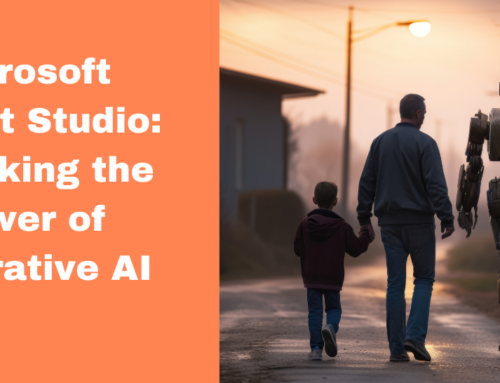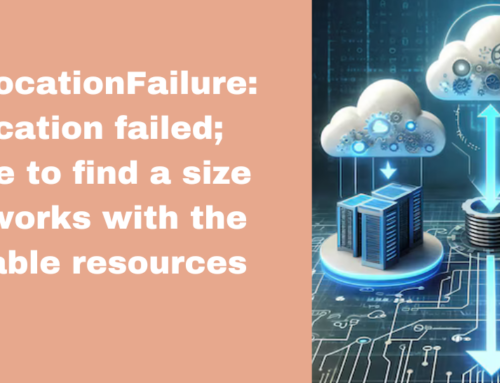Azure AI Foundry is a unified platform introduced by Microsoft to streamline the development, deployment, and management of artificial intelligence solutions. It integrates tools like Azure OpenAI Studio, enabling developers to build applications with advanced models, including GPT-4 Turbo, and utilize functionalities like Retrieval Augmented Generation (RAG) for enhanced data-based responses. The platform also provides centralized management, allowing IT administrators to monitor resources and ensure compliance efficiently.
Key features of Azure AI Foundry
- End-to-end AI Lifecycle Management: Azure AI Foundry simplifies the entire AI lifecycle, from data preparation and model training to deployment and monitoring. This integrated approach reduces complexity and accelerates development.
- Prebuilt and Customizable Models: The platform provides ready-to-use models for tasks like image recognition, sentiment analysis, and more, which can be customized. These prebuilt models offer a quick starting point for various AI applications.
- Automated Machine Learning (AutoML): AutoML capabilities allow users to automate algorithm selection and model optimization, making building effective AI solutions easier for those without deep expertise in machine learning.
- Collaboration Tools: With built-in integration with tools like Jupyter Notebooks and Visual Studio Code, teams can collaborate effectively, regardless of location.
- Scalable Cloud Infrastructure: Powered by Azure’s robust cloud ecosystem, the platform supports scalable AI workloads, enabling efficient handling of large datasets or complex models.
- Governance and Monitoring: Azure AI Foundry includes tools to ensure models are fair, explainable, and compliant with regulatory requirements, fostering trust and accountability.
Azure AI Foundry portal
The Azure AI Foundry portal provides an organized interface for building, managing, and deploying AI applications. It consolidates tools and features for both developers and administrators, enabling seamless workflows for customizing AI models, managing data, and deploying solutions.
Key options available in the Azure AI Foundry portal
- Projects: Central hub for organizing AI work.
- Model Catalog: Provides a library of pre-trained AI models.
- Prompt Flow: Helps design, test, and optimize prompt engineering for large language models.
- Code Workspace: Integrated environment for coding and testing AI solutions.

The project development process in the Azure AI Foundry portal follows distinct stages that enable efficient management of AI solutions. Each stage focuses on building, deploying, and optimizing AI applications. Here are the main stages:
- Project Creation: Establish a workspace for developing AI solutions.
- Define the project scope and objectives.
- Choose or create a project template based on the use case.
- Set up roles and permissions for team collaboration.
- Data Preparation: Organize and preprocess data for training and evaluation.
- Upload datasets to the portal using the Data Management feature.
- Clean and preprocess data for compatibility with selected models.
- Store data in project-specific directories.
- Model Selection and Customization: Choose or fine-tune AI models for the desired application.
- Browse and select pre-trained models from the Model Catalog.
- Fine-tune models using project-specific data to improve performance.
- Evaluate models against test datasets to ensure accuracy.
- Prompt Engineering (Optional): Design effective prompts for large language models.
- Use the Prompt Flow tool to design and test prompts.
- Implement Retrieval Augmented Generation (RAG) if additional context is needed.
- Optimize prompts for accuracy and relevance based on feedback.
- Development and Integration: Build and integrate the application logic with AI models.
- Use the Code Workspace or integrate with VS Code for development.
- Develop application features, workflows, and UI components.
- Integrate AI models into the application using Azure AI SDKs and APIs.
- Testing and Validation: Ensure the robustness and reliability of the solution.
- Perform testing using real-world scenarios.
- Debug and refine the solution to address any performance or accuracy issues.
- Validate the application against predefined success criteria.
- Deployment: Make the solution available for production use.
- Deploy the application to Azure services using the portal or CLI tools.
- Configure scaling options and monitor resource utilization.
- Set up governance policies for compliance and security.
- Monitoring and Optimization: Maintain performance and adapt to evolving requirements.
- Use the portal’s Monitoring and Insights tools to track model and application metrics.
- Update models and prompts as needed.
- Scale resources or optimize workflows for cost-efficiency.
Conclusion
The Azure AI Foundry’s modular approach enables businesses to innovate by leveraging AI for efficient data delivery and client services. It is particularly beneficial for organizations transitioning generative AI experiments into production environments by offering guidance and best practices for AI adoption.
Xieles provides support and expertise to help you leverage the full potential of Azure AI Foundry.!







